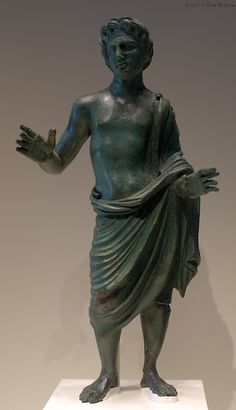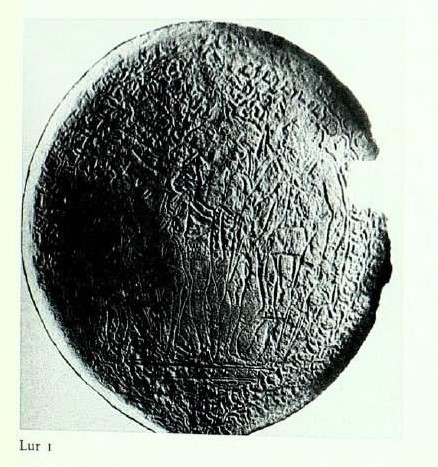Lur (deity) on:
[Wikipedia]
[Google]
[Amazon]
 Lur (Lurs, Luridus, Lurmitla) is an
Lur (Lurs, Luridus, Lurmitla) is an
 There is not much information about Lur except from the various pieces of evidence found in differing areas. In
There is not much information about Lur except from the various pieces of evidence found in differing areas. In  Lur is mentioned on the
Lur is mentioned on the
 Lur (Lurs, Luridus, Lurmitla) is an
Lur (Lurs, Luridus, Lurmitla) is an Etruscan __NOTOC__
Etruscan may refer to:
Ancient civilization
*Etruscan civilization (1st millennium BC) and related things:
**Etruscan language
** Etruscan architecture
**Etruscan art
**Etruscan cities
**Etruscan coins
**Etruscan history
**Etruscan myt ...
underworld deity
A deity or god is a supernatural being considered to be sacred and worthy of worship due to having authority over some aspect of the universe and/or life. The ''Oxford Dictionary of English'' defines ''deity'' as a God (male deity), god or god ...
with little known history. Lur does not have many depictions but the ones that have been found show the deity as a male. He has been noted to be associated with a prophetic nature, while also bearing oracular and martial characteristics. He has been linked to another deity by the name of Laran
In Etruscan mythology and religion, Laran (or Larun) is the god of war. In art, he was portrayed as a naked youth wearing a helmet, a cuirass and carrying a spear, shield, or lance. Laran also appears to be an underworld god. Among his attribut ...
, which, it has been suggested, is where Lur derives his name from. The context of the name has been associated with darkness and the underworld. A fifth century vase found near a sanctuary in San Giovenale bears an inscription that translates: "I am Lurs, that of Laran." Another inscription has been found with the spelling ''lartla'', noting relations to a Lar, which gives a label to Lur that describes features of protection. The name may be related to Latin ''luridus'' "pale".
Archaeological Evidence
 There is not much information about Lur except from the various pieces of evidence found in differing areas. In
There is not much information about Lur except from the various pieces of evidence found in differing areas. In Corchiano Corchiano is a town and ''comune ''in the province of Viterbo, Lazio, central Italy. It was an ancient settlement of the Faliscans and, in the Renaissance and later, a fief of the Farnese family.
The local produce is hazelnuts and wine. Annual ...
, a candelabrum
A candelabrum (plural candelabra but also used as the singular form) is a candle holder with multiple arms. "Candelabra" can be used to describe a variety of candle holders including chandeliers. However, candelabra can also be distinguished as b ...
dating around 400-350 BCE was found with an inscription in dedication to Lur. A bucchero
Bucchero () is a class of ceramics produced in central Italy by the region's pre-Roman Etruscan population. This Italian word is derived from the Latin ''poculum'', a drinking-vessel, perhaps through the Spanish ''búcaro'', or the Portuguese ' ...
chalice
A chalice (from Latin 'cup', taken from the Ancient Greek () 'cup') is a drinking cup raised on a stem with a foot or base. Although it is a technical archaeological term, in modern parlance the word is now used almost exclusively for the ...
found by a small shrine near a bridge in San Giovenale does not specifically have ''Lur'' inscribed but rather ''laruniθla'', again, relating Lur to other gods with similar name epithets. A bronze sheet from Perugia
Perugia ( , ; ; ) is the capital city of Umbria in central Italy, crossed by the River Tiber. The city is located about north of Rome and southeast of Florence. It covers a high hilltop and part of the valleys around the area. It has 162,467 ...
bears text that translates "dedicated to Lvrmita," suggesting the gods' oracular characteristic. In addition, a bronze statuette possibly from Orvieto
Orvieto () is a city and ''comune'' in the Province of Terni, southwestern Umbria, Italy, situated on the flat summit of a large butte of volcanic tuff. The city rises dramatically above the almost-vertical faces of tuff cliffs that are compl ...
features a man, perhaps Vel Matunas, given the inscription on the cloak. The statuette has another votive inscription that translates "precious/sacred gift to Lur", also contributing to his oracular nature.
 Lur is mentioned on the
Lur is mentioned on the Lead Plaque of Magliano
The Lead Plaque of Magliano (or Lead Plate of Magliano or Lead Disk; Corpus Inscriptionum Etruscarum, CIE 5237), which contains 73 words in the Etruscan language, seems to be a dedicatory text, including as it does many names of mostly underworld ...
, which seems to bear a list of names of underworld deities-- Cautha, Thanr, Calus, Suri--along with information about dedications to them. The beginning of side B reads: ''mlach thanra calusc ecnia iv avil mi menicac marca lurcac'' meaning ""O beautiful (deity) of Thanr and Calus ecnia (subj. pro imp.?) IV year (each 4 years?); I (am) of ''Meni'', ''Mar(is)'' and ''Lur''...." The last two lines read: ''tins . lursth . tev huvi thun /lursth sas afrs . naces'' which van der Meer interprets as: ""for Tin in the area of Lur, O referee, offer(?) a firstling / nd make an offering of a firstlingin the area of Lur, for the beloved ancestors themselves." Note the connection of Lur with Tin(ia) here. Lur is also mentioned on another lead plaque from Santa Marinella
Santa Marinella is a ''comune'' (municipality) in the Metropolitan City of Rome Capital, in the Italy, Italian region of Lazio, located about northwest of Rome.
It includes the beach resort of Santa Severa (the ancient Pyrgi), and a medieval ca ...
, which shows a connection to Tinia
Tinia (also Tin, Tinh, Tins or Tina) was the sky god and the highest deity in Etruscan religion, equivalent to the Roman Jupiter and the Greek Zeus.
However, a primary source from the Roman Varro states that Veltha, not Tins, was the sup ...
and reinforces this relation with other findings in Bolsena
Bolsena is a town and ''comune'' of Italy, in the province of Viterbo in northern Lazio on the eastern shore of Lake Bolsena. It is 10 km (6 mi) north-north west of Montefiascone and 36 km (22 mi) north-west of Viterbo. The an ...
inscribed with ''lurs'' near two Tinia altars.
Lur also shows up in the longest extant Etruscan text--the Liber Linteus
The (Latin language, Latin for "Linen Book of Zagreb", also known rarely as , "Book of Agram (Croatia), Agram") is the longest Etruscan language, Etruscan text and the only extant linen book (libri lintei), dated to the 3rd century BC, making ...
. In the fifth column, section D (lines 19-22), the following sequence is found: ''nunθen . θesan . tinś . θesan /eiseraś . śeuś . unuχ . mlaχ . nunθen . θesviti / favitic . faśei . cisum . θesane . uslanec / mlaχe . luri . zeric'' which translates roughly: "Make an offering to ''Θesan'' ("Dawn Goddess" or "Venus") of ''Tin'' ("Jupiter" or "bright(ening) sky") and to ''Θesan'' / of the Dark Gods; for them make an appropriate offering with oil of the morning / and of the evening. (Also) a three-fold (libation?) in the morning and during the noon (hour) / to the beautiful ''Lur'' and ''Zer''." Note again that Tin occurs in the same passage. In the same text, in the otherwise illegible 18th line of the sixth column after three intentionally blank lines (which elsewhere seems to be a marker for a new ritual and date), the form ''lur-ni-θi'' occurs, which van der Meer interprets to me "in the place sacred to Lurni" perhaps a variant form for Lur.L. B. van der Meer Liber linteus zagrabiensis. The Linen Book of Zagreb. A Comment on the Longest Etruscan Text. Louvain/Dudley, MA 2007 pp.87-92
However, the most prominent evidence discovered concerning Lur is a bronze mirror from Vulci. The mirror is an extension of Lurs relationship with Tinia. In the '' Lexicon Iconographicum Mythologiae Classicae'', H.L Stoltenberg describes the scene present with three figures, Tinia, Lur, and an unknown young man. Tinia is in the middle, identifiable by the lightning bolt. He is wearing a chiton and looking to his right with his right arm raised. The unknown young man sits, appearing to be listening to whatever Tinia might be saying. To the left of the mirror, on Tinia's right, sits Lur. He is naked except for a cloak, which is only noticeable from the seal around his neck. His head is thrown back, hair frizzled, and mouth partially open. He carries a sword in his right hand and his left is gesturing towards Tinia. A head coming from the clouds is also seen and has been implied to be delivering a message to Lur. With the combinations of Lurs behavior and gestures, the mirror amplifies a prophetic deity.
Cult
The numerouscandelabra
A candelabrum (plural candelabra but also used as the singular form) is a candle holder with multiple arms. "Candelabra" can be used to describe a variety of candle holders including chandeliers. However, candelabra can also be distinguished as b ...
found with Lur inscriptions suggest the object was notable as an offering to the god. An excavation at a sanctuary in Cetamura where a shard with an inscribed Lurs was found, likewise pieces of iron founded fit together to indicate potentially a candelabrum. The bronze Vel Matunas statuette again enforces the cult of Lur. In Gravisca, by the Sacellum Alpha, a miniature shrine, an impasto bowl inscribed with Lur was found. Additionally, a bronze strip from Perugia
Perugia ( , ; ; ) is the capital city of Umbria in central Italy, crossed by the River Tiber. The city is located about north of Rome and southeast of Florence. It covers a high hilltop and part of the valleys around the area. It has 162,467 ...
, as well as a small altar in Vulci
Vulci or Volci ( Etruscan: ''Velch'' or ''Velx'', depending on the romanization used) was a rich Etruscan city in what is now northern Lazio, central Italy.
As George Dennis wrote, "Vulci is a city whose very name... was scarcely remembered, ...
both including dedications to ''lurmitla''. The gods name furthermore, is including on the Piacenza
Piacenza (; ; ) is a city and (municipality) in the Emilia-Romagna region of Northern Italy, and the capital of the province of Piacenza, eponymous province. As of 2022, Piacenza is the ninth largest city in the region by population, with more ...
liver twice. Scholars have debated with the evidence at hand what exactly the deity Lur oversees. Archaeologist Giovanni Colonna asserts a dark and underworld type of god, while D.F Maras thought of him as more of a warlike and prophetic god. Contrastingly, L. Bouke Van der Meer labels Lur as having the combined qualities.
References
Notes
Bibliography
* * * * *External links
*{{Commons category-inline Etruscan religion Etruscan gods